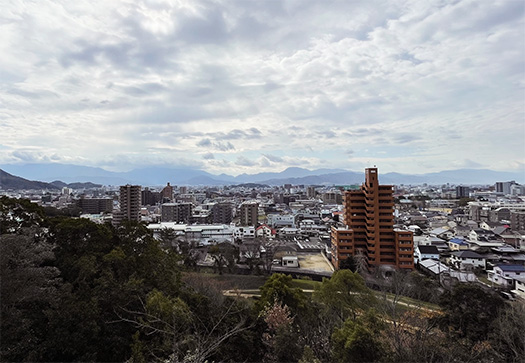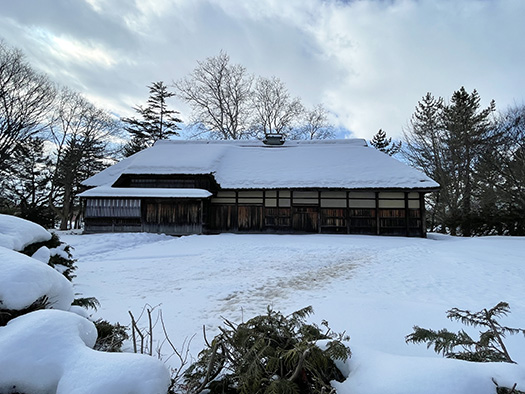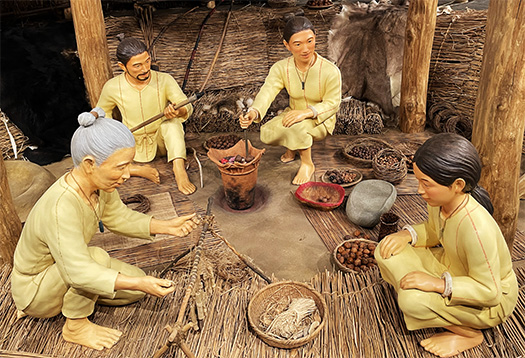


写真は四国松山の高台からの「都市市街地」と東北津軽の古民家、そして古民家での家族の「だんらん」の様子です。
先日ある住宅技術関係の主導的な存在の方と話していて、わたしのブログについて率直な感想、印象をいただいた。自分自身でも非常に啓発的で、また、自己分析的に気付くことが大きかった。
自分自身のスタンス、環境が大きく変化することを自分で選択してきたのですが、そうするとある部分では「書けること」と「書けないこと」みたいな仕分けがどうしても必要になって、この毎日書き続けてきているブログ表現でも、「表現可能なテーマ」に自己限定するようになっていた。
自分自身では巨視的な視点、日本人としての「生きる環境」をトータルに考えるという点ではたとえばちょっと前まで書き続けていた「皇統と熊野」みたいなテーマも整合的な流れとは思っていたのですが、たしかに現実の住宅政策とか、リアルタイムの「暮らし方」検討みたいなテーマとは距離感がある。
・・・というような意識変化もあり、また環境変化も一段落ついたということで、表題のような普遍的で直接的なテーマを書いてみようと考える次第です。
最近の東京首都圏や大阪中心部などでは「タワーマンション」という新たな「立地・ムラ」選択が大きなトレンドになっている現実がある。そこに大きな「憧れ」を感じさせるような印象が起こっているのだという。極端な例ではそこに住みたいが一心で、不相応な選択をして生活破綻する例もあるとか。
人口減少時代を迎えて、より利便性と住宅地域「ブランド」化が進展している現実。都市居住においても「格差」型の立地・ムラ選択という社会構造が生み出されつつある。
こういったことを考えると、人間は結局、階層とか地域性指標に対してそれを最上位価値と考える存在なのだろうかと思えてくる。
一方では、住宅性能要件のような部分でも、北海道的なその選択感覚と関東以南地域でのそれとでは断層があるように思える。北海道地域ではその選択は地に足が着いた感覚があるけれど、関東以南地域では、ややもすれば「原理主義的」な、そして他者攻撃的なスタンスというちょっと異様な光景も生み出されてきているのだという。
こうした原理主義的な部分については今後、考察することになると思うけれど、今回の検討シリーズでは立地選択と環境性能という、ひとの「住まい」の究極的なテーマについて現代がどういった状況なのか、考えて見たいと思っています。あえて「立地」というフレーズに「ムラ」という場違いとも思えるものを結びつけたのは、どうも直感的にそこには人間の普遍的な真理としての「帰属を求める不安心理」というものが根深く存在しているのではないかと思っているからです。
今後、これまでの撮りため事例写真などと会話(?)しながら考えて見たいので感想がありましたら、よろしくお聞かせください。
English version⬇
The “Location/Village” and “Quality of Living” Selection that Belongs -1
Tower condominiums have become the symbol of “winners” because of their top convenience. The basis of this way of life and sense of value is the worship of “location” and belonging. What is the point of contact with environmental performance? ・・・・・・.
The photos show the “urban city area” from the heights of Matsuyama, Shikoku, and an old minka house in Tsugaru, Tohoku, as well as a family “gathering” in an old minka house.
I was talking with a leading figure in housing technology the other day, and he gave me his honest opinion and impression of my blog. It was very enlightening and a great deal of self-analytical realization on my part.
I have chosen to change my own stance and environment drastically, and in doing so, I inevitably had to sort out certain parts, like “what I can write” and “what I cannot write,” and even in this daily blog expression, I had come to limit myself to “expressive themes” (as I have been doing in the past) I have been limiting myself to “expressible themes” in this daily blog expression.
I thought that the theme of “the imperial lineage and Kumano,” which I had been writing about until a little while ago, was consistent with a macroscopic viewpoint and a total consideration of the “living environment” of the Japanese people, but it is true that there is a distance between this theme and real housing policies or real-time “living style” studies. However, there is a sense of distance between the themes and the real housing policy or the real-time “way of life” study.
However, I have been thinking that the theme of “Kumano” is consistent with the current trend, but it seems distant from the real housing policy or the real-time “way of living” theme.
The reality is that recently in the Tokyo metropolitan area and central Osaka, there has been a major trend toward the selection of new “locations and irregularities” called “tower condominiums. The impression of a great “longing” to live there is occurring. In extreme cases, there have been cases of people who want to live there, but in the sole desire to live there, they have made unworthy choices that have led to the collapse of their lifestyles.
The reality is that as we enter an era of declining population, the “branding” of residential areas is becoming more convenient. In urban living, too, a social structure of “disparity”-type selection of location and community is being created.
Considering the above, it makes me wonder if human beings are, after all, beings who consider hierarchy and regional indices to be the highest value.
On the other hand, even in areas such as housing performance requirements, there seems to be a fault line between the Hokkaido sense of choice and that of the regions south of the Kanto region. In Hokkaido, the choices are more grounded, while in the Kanto region and southward, there is a more “fundamentalist” and aggressive stance toward others, which is a bit bizarre.
I will discuss these fundamentalist aspects in the future, but for this series of articles, I would like to consider the current situation regarding the ultimate theme of people’s “home,” namely, site selection and environmental performance. The reason why I have dared to combine the phrase “location” with something that seems to be out of place, “unevenness,” is because I intuitively believe that the universal truth of human beings, the “anxious psychology of seeking belonging,” is deeply rooted in this area.
I would like to think about this while having a conversation (?) with the photos I have taken so far. If you have any thoughts, please let me know.
Posted on 2月 10th, 2024 by 三木 奎吾
Filed under: 住宅マーケティング







コメントを投稿
「※誹謗中傷や、悪意のある書き込み、営利目的などのコメントを防ぐために、投稿された全てのコメントは一時的に保留されますのでご了承ください。」
You must be logged in to post a comment.